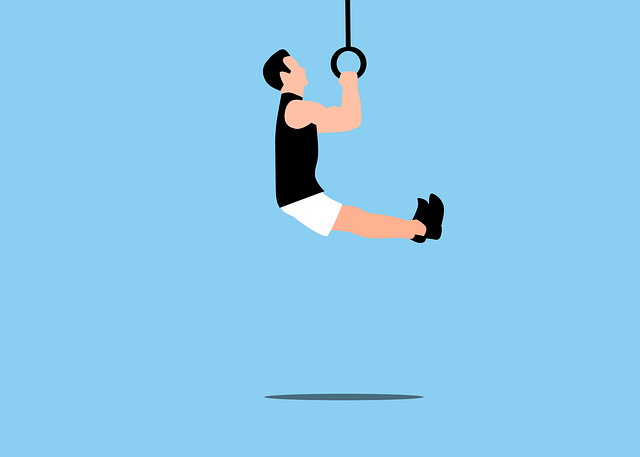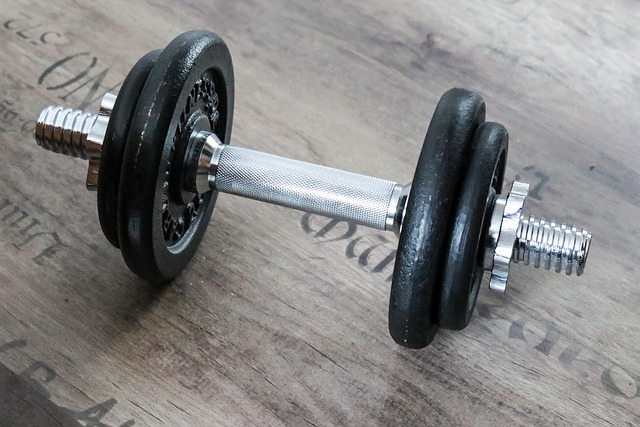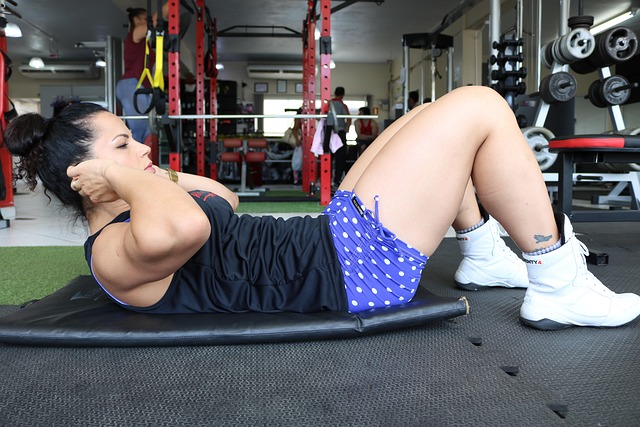To maintain a safe and hygienic residential gym environment, regularly clean and disinfect equipment after each use, following manufacturer guidelines for maintenance, storage, and organization. Schedule monthly inspections and annual professional servicing. Prioritize proper exercise form and safety precautions. Regularly calibrate and monitor equipment performance to ensure optimal condition and longevity.
Transforming your home into a fitness haven is easier than ever with residential gym equipment. To ensure it stays in top shape, proper maintenance is key. This guide navigates essential practices for optimal residential gym equipment care, including regular cleaning and disinfection, efficient storage strategies, preventive maintenance checks, safety guidelines, calibration, and performance monitoring. Embrace these techniques to keep your home gym vibrant and functional.
- Regular Cleaning and Disinfection Protocols
- Proper Storage and Organization Techniques
- Maintenance Checks and Scheduled Servicing
- Safety Precautions for Equipment Use
- Calibration and Performance Monitoring
Regular Cleaning and Disinfection Protocols

Regular cleaning and disinfection are essential practices to maintain a safe and hygienic residential gym environment. After each use, it’s crucial to wipe down equipment with a disinfecting cleaner to eliminate germs and bacteria. Focus on high-touch areas like handles, seats, and pedals, as these are most susceptible to contamination. A combination of warm water, mild detergent, and a disinfectant solution is effective for most equipment. Allow the surface to air dry completely before using again to prevent any potential irritation or damage caused by residual moisture.
Implementing a weekly deep cleaning routine further ensures that your residential gym equipment remains in optimal condition. This involves scrubbing hard-to-reach nooks and crevices, vacuuming mats, and polishing metal components. Using appropriate cleaning tools and products tailored for fitness gear will help preserve its lifespan and maintain a clean, inviting space for your at-home workouts.
Proper Storage and Organization Techniques

Maintaining your residential gym equipment involves efficient storage and organization techniques. Start by allocating specific areas for each piece of equipment, ensuring they are easily accessible yet out of high-traffic zones to prevent damage. Use sturdy racks or hooks for weight machines, free weights, and exercise bands, keeping them off the floor and away from walls that might be prone to scratches. Implement a color-coded system for resistance bands, dumbbells, and other accessories to make finding the right equipment quick and hassle-free.
Organize your residential gym equipment by frequency of use, placing often-used items within easy reach. Consider using lockable cabinets or secure storage solutions for valuable or fragile pieces to safeguard them from dust, pets, or accidental damage. Regularly inspect and clean each piece, wiping down surfaces with a microfiber cloth and following manufacturer guidelines for specific care instructions. This not only maintains the equipment’s functionality but also extends its lifespan, ensuring your home gym remains a well-equipped and enjoyable space.
Maintenance Checks and Scheduled Servicing

Regular maintenance checks are essential for keeping your residential gym equipment in top condition. Schedule a routine inspection at least once a month to identify any signs of wear, tear, or malfunction. During these checks, look for loose parts, damaged hardware, or unusual noises that might indicate an underlying issue. Lubricating moving parts and tightening connections can often prevent more serious problems down the line.
In addition to monthly inspections, scheduled servicing by a professional technician is vital. This should be done at least twice a year for most equipment. Regular maintenance ensures your residential gym equipment operates safely and efficiently, maximizing its lifespan and performance. It’s an investment in your fitness routine and overall well-being.
Safety Precautions for Equipment Use

When using your home gym equipment, safety should always be a top priority. Before engaging in any workout routine, ensure that all machines and tools are properly assembled and adjusted according to the manufacturer’s guidelines. This is crucial for preventing accidents during intense exercises. Regularly inspect your residential gym equipment for any signs of wear or damage, replacing parts as necessary to maintain optimal functionality and safety standards.
Proper form and technique are also essential aspects of safe equipment use. Take time to learn and understand each exercise’s correct form; this reduces the risk of injury and ensures you’re getting the most effective workout from your residential gym equipment investment. Remember, proper precautions can transform your home workouts into a safe and efficient experience, allowing you to achieve your fitness goals with confidence.
Calibration and Performance Monitoring

Regular calibration and performance monitoring are essential aspects of maintaining optimal condition for your residential gym equipment. Calibration ensures that each machine provides accurate measurements and functions as designed, which is crucial for safety and effectiveness during workouts. For instance, a treadmill’s speed and incline settings should be precisely calibrated to accurately reflect the user’s input. Regular checks can prevent unexpected malfunctions that might lead to injuries.
Performance monitoring involves tracking key metrics over time, such as equipment usage rates, machine life expectancy, and maintenance intervals. By keeping records of these data points, you can identify trends, anticipate potential issues, and schedule preventive maintenance. This proactive approach not only extends the lifespan of your residential gym equipment but also ensures they remain in top shape for efficient and safe workouts.
Maintaining your residential gym equipment is essential for ensuring safety, optimal performance, and longevity. By implementing regular cleaning, proper storage, maintenance checks, safety precautions, and calibration, you can keep your home gym in top shape. These practices not only protect your investment but also contribute to a more enjoyable and efficient workout experience. Remember to regularly review and update your protocols to adapt to new knowledge and equipment advancements in the world of residential gym equipment.
